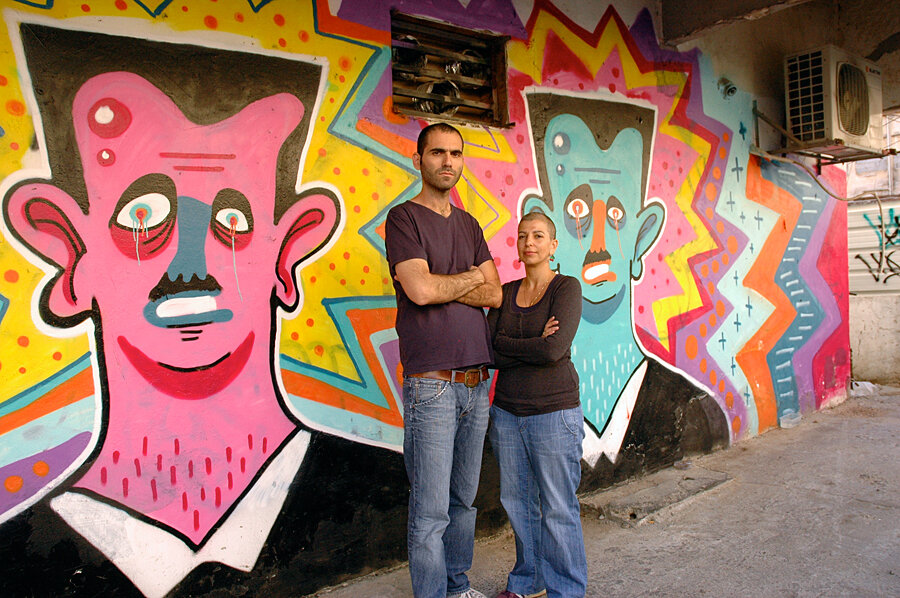Edgy exhibit asks Israelis to reconsider Syrian strongman Assad
Loading...
| Tel Aviv
It’s hard to say something new to Israelis about Syria's Bashar al-Assad after more than two years of civil war in the neighboring country. But contemporary artists Yanay Geva and Lilac Madar have tried to do just that in an exhibition that features everything from a gas canister to a family photo of the Assads, placed on a lace-covered side table with a bowl of Arab sweets.
It is that dissonance, rather than any graphic depictions of war – all too common on the news here – that have really caused visitors to think, says Mr. Geva.
“We see horrifying images every day,” he says. “If we used the same tools as the mass media, we wouldn’t be able to achieve any impact… People are already immune against being shocked again.”
Geva and Ms. Madar recruited a handful of fellow artists and pulled the exhibit together in a mere seven weeks, after the chemical weapons attack in late August that led to US threats of air strikes against the Assad regime. While the attack hit a raw nerve in Israel, given the historic echoes of Nazi gas chambers, Geva and Madar saw little impact on Israeli policy.
So at the Binyamin Gallery in Tel Aviv’s scruffy Florentin district, they combined outdoor graffiti with delicate paintings and pieces that incorporated physical objects, such as Aleppo pistachios featuring miniature paintings. These paintings create a critique of a notoriously flattering Vogue profile of Assad’s wife, Asma, that ran just before the uprising began in March 2011.
The artists' goal was to push visitors to go beyond the one-dimensional narrative in Israel – how does the war impact Israel's security – and puzzle over the central figure behind the war.
“Officially, the state of Israel chose to restrain itself and look to the other way,” they wrote in an explanatory note. “Art, in and of itself, does not offer solutions to bloody conflicts such as the war in Syria. Rather, art elicits questions and presents dilemmas that may have otherwise gone unnoticed.”
Case in point is one of Geva’s installations, called “Laughing gas.” On first glance, visitors may smile at seeing the gas canister marked off by red-and-white industrial tape in a corner of the gallery. But then you notice the label on the canister is “toxic gases,” a somber note in the context of the recent gas attacks.
It’s that dissonance that can spur Israelis to wrestle more with what’s happening to its northern neighbor, says Geva.
“Once people leave, and keep on thinking about it, I’ve reached my goal,” he says. “They’re not really sure what it is, but now they think about Syria.”
The three-week exhibit wrapped up Dec. 7. Geva and Madar hope to take the exhibit abroad, working with local graffiti artists to broaden the perspective beyond Israel and help others around the globe to rethink their perceptions of Syria and its ebullient dictator.








